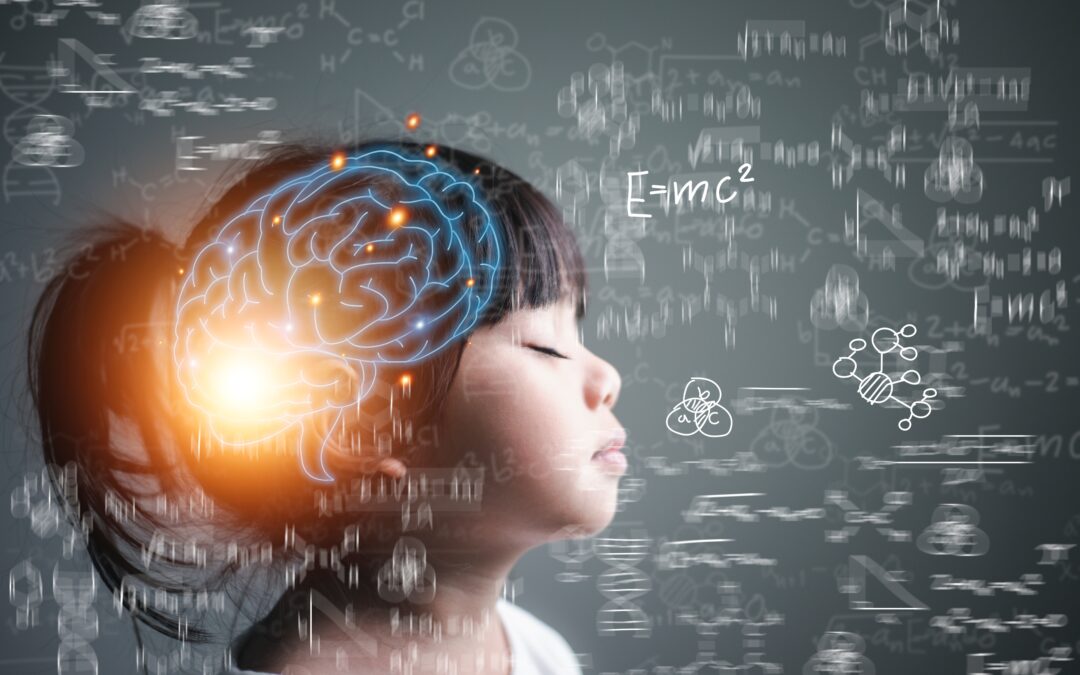Transfer of Learning Gain from Working Memory Training
Working memory training has been a topic of significant interest in cognitive psychology and educational research over the past two decades. The primary goal of working memory training is to improve an individual’s working memory capacity and potentially transfer those gains to other cognitive abilities and real-world skills. This essay examines the concept of transfer of learning gain resulting from working memory training, exploring the types of transfer, research findings, and the ongoing debate surrounding the effectiveness of such interventions.
Types of Transfer
When discussing transfer effects from working memory training, researchers typically distinguish between near transfer and far transfer:
Near Transfer
Near transfer refers to improvements on tasks that are similar to those used in the training program. These tasks often share similar cognitive processes or methodologies with the training tasks. Near transfer effects are generally more common and easier to demonstrate in working memory training studies (Melby-Lervåg et al., 2016).
Far Transfer
Far transfer occurs when training gains generalize to tasks or skills that are dissimilar from the training tasks. This type of transfer is the ultimate goal of most working memory training programs, as it would indicate that the training has broader cognitive benefits. Examples of far transfer could include improvements in fluid intelligence, academic performance, or everyday cognitive functioning (Au et al., 2015).
Research Findings
Near Transfer Effects
Numerous studies have consistently demonstrated near transfer effects following working memory training. For example, Melby-Lervåg et al. (2016) conducted a comprehensive meta-analysis of working memory training studies and found reliable short-term gains that generalized to somewhat similar working memory tasks. This finding suggests that working memory training can indeed improve performance on tasks that closely resemble those used in the training program.
Far Transfer Effects
The evidence for far transfer effects is much more limited and controversial. While some early studies reported promising results, subsequent research has often failed to replicate these findings or has found only modest effects:
1. **Fluid Intelligence**: Initial studies reported improvements in fluid intelligence following working memory training. However, later research has largely failed to replicate these findings or has found only small, inconsistent effects (Au et al., 2015).
2. **Academic Skills**: Some studies have examined the impact of working memory training on academic skills such as reading and mathematics. Results have been mixed, with some studies reporting modest improvements and others finding no significant effects (Alloway et al., 2013).
3. **Language Skills**: Research on the transfer of working memory training to language abilities has shown limited success. While some studies have found improvements in specific language tasks, broad improvements in language skills are not consistently observed (Carretti et al., 2014).
4. **ADHD Symptoms**: Early research suggested that working memory training might reduce ADHD symptoms in children. However, more recent studies and meta-analyses have found limited evidence for clinically significant improvements in ADHD symptoms following working memory training (Soveri et al., 2017).
Factors Influencing Transfer Effects
Several factors may influence the likelihood and extent of transfer effects from working memory training:
Training Duration and Intensity
Some researchers have proposed a dose-dependent relationship between training and transfer, suggesting that more intensive or longer-duration training programs might lead to greater transfer effects. However, the evidence for this relationship is mixed, and there is no clear consensus on the optimal duration or intensity of training (Weicker et al., 2016).
Individual Differences
Participant characteristics may play a role in determining the effectiveness of working memory training. For example, Foster et al. (2017) found that individuals with higher baseline working memory capacity showed larger improvements on training tasks. However, this did not necessarily translate to greater transfer effects.
Training Approach
The specific approach used in working memory training may influence transfer effects. For instance, strategy-based training approaches have shown some promise in promoting transfer to novel tasks. A study by Karr et al. (2014) found that children who received strategy-based working memory training performed significantly better on a novel problem-solving task compared to a control group.
Age of Participants
The age of participants may affect the outcomes of working memory training. Some studies suggest that younger children may show greater transfer effects, possibly due to greater neural plasticity. However, more research is needed to fully understand the role of age in working memory training outcomes (Weicker et al., 2016).
Challenges and Limitations in Working Memory Training Research
Several challenges and limitations have been identified in the field of working memory training research:
Methodological Issues
Many early studies on working memory training were criticized for methodological shortcomings, such as small sample sizes, lack of active control groups, and inadequate blinding procedures. These issues may have contributed to inflated estimates of training effects (Melby-Lervåg et al., 2016).
Publication Bias
There is concern about publication bias in the working memory training literature, with positive results potentially being more likely to be published than null findings. This bias could lead to an overestimation of the effectiveness of working memory training (Soveri et al., 2017).
Maintenance of Effects
Even when transfer effects are observed, there is often limited evidence for the long-term maintenance of these gains. Many studies only assess immediate post-training effects, and those that include follow-up assessments often find that gains diminish over time (Melby-Lervåg et al., 2016).
Individual Variability
There is considerable variability in how individuals respond to working memory training. Some participants show substantial improvements, while others show little or no benefit. Understanding the factors that contribute to this variability remains an important area for future research (Foster et al., 2017).
Future Directions
Despite the challenges and limitations in working memory training research, several promising avenues for future investigation have emerged:
Personalized Training Approaches
Future research could focus on developing more personalized training approaches that take into account individual differences in cognitive abilities, learning styles, and motivational factors (Weicker et al., 2016).
Combining Working Memory Training with Other Interventions
Integrating working memory training with other cognitive or educational interventions may enhance transfer effects. For example, combining working memory training with metacognitive strategy instruction has shown some promise in improving academic outcomes (Carretti et al., 2014).
Neuroimaging Studies
Incorporating neuroimaging techniques into working memory training studies could provide insights into the neural mechanisms underlying training effects and help identify biomarkers of successful transfer (Au et al., 2015).
Ecological Validity
Developing more ecologically valid training tasks and transfer measures could help bridge the gap between laboratory findings and real-world applications of working memory training (Alloway et al., 2013).
Conclusion
The transfer of learning gain from working memory training remains a complex and controversial topic in cognitive psychology and educational research. While near transfer effects are relatively well-established, evidence for far transfer to broader cognitive abilities and real-world skills is limited and inconsistent (Melby-Lervåg et al., 2016). Future research should focus on addressing methodological challenges, exploring individual differences in training responsiveness, and developing more targeted and personalized training approaches (Foster et al., 2017; Weicker et al., 2016). As our understanding of the mechanisms underlying working memory and cognitive plasticity continues to grow, we may be better positioned to design effective interventions that promote meaningful and lasting cognitive improvements.
References
Alloway, T. P., Bibile, V., & Lau, G. (2013). Computerized working memory training: Can it lead to gains in cognitive skills in students? Computers in Human Behavior, 29(3), 632-638.
Au, J., Sheehan, E., Tsai, N., Duncan, G. J., Buschkuehl, M., & Jaeggi, S. M. (2015). Improving fluid intelligence with training on working memory: A meta-analysis. Psychonomic Bulletin & Review, 22(2), 366-377.
Carretti, B., Caldarola, N., Tencati, C., & Cornoldi, C. (2014). Improving reading comprehension in reading and listening settings: The effect of two training programmes focusing on metacognition and working memory. British Journal of Educational Psychology, 84(2), 194-210.
Foster, J. L., Harrison, T. L., Hicks, K. L., Draheim, C., Redick, T. S., & Engle, R. W. (2017). Do the effects of working memory training depend on baseline ability level? Journal of Experimental Psychology: Learning, Memory, and Cognition, 43(11), 1677-1689.
Karr, J. E., Areshenkoff, C. N., Rast, P., & Garcia-Barrera, M. A. (2014). An empirical comparison of the therapeutic benefits of physical exercise and cognitive training on the executive functions of older adults: A meta-analysis of controlled trials. Neuropsychology, 28(6), 829-845.
Melby-Lervåg, M., Redick, T. S., & Hulme, C. (2016). Working memory training does not improve performance on measures of intelligence or other measures of “far transfer”: Evidence from a meta-analytic review. Perspectives on Psychological Science, 11(4), 512-534.
Soveri, A., Antfolk, J., Karlsson, L., Salo, B., & Laine, M. (2017). Working memory training revisited: A multi-level meta-analysis of n-back training studies. Psychonomic Bulletin & Review, 24(4), 1077-1096.
Weicker, J., Villringer, A., & Thöne-Otto, A. (2016). Can impaired working memory functioning be improved by training? A meta-analysis with a special focus on brain injured patients. Neuropsychology, 30(2), 190-212.

As a research scientist in cognitive neuroscience and psychology, I write a blog exploring computational modeling and gamified working memory training. I share insights from my research on how these approaches impact learning and cognition in both typical and clinical populations, with a focus on cognitive rehabilitation for brain injuries, neurodegenerative, and neurodevelopmental conditions. My blog also covers cognitive, emotional, and behavioral assessment, the influence of biopsychosocial factors, and the application of machine learning in neuropsychological interventions. By translating complex science into accessible content, I aim to inform professionals and the public about brain health and cognitive science.
Dorota Styk


